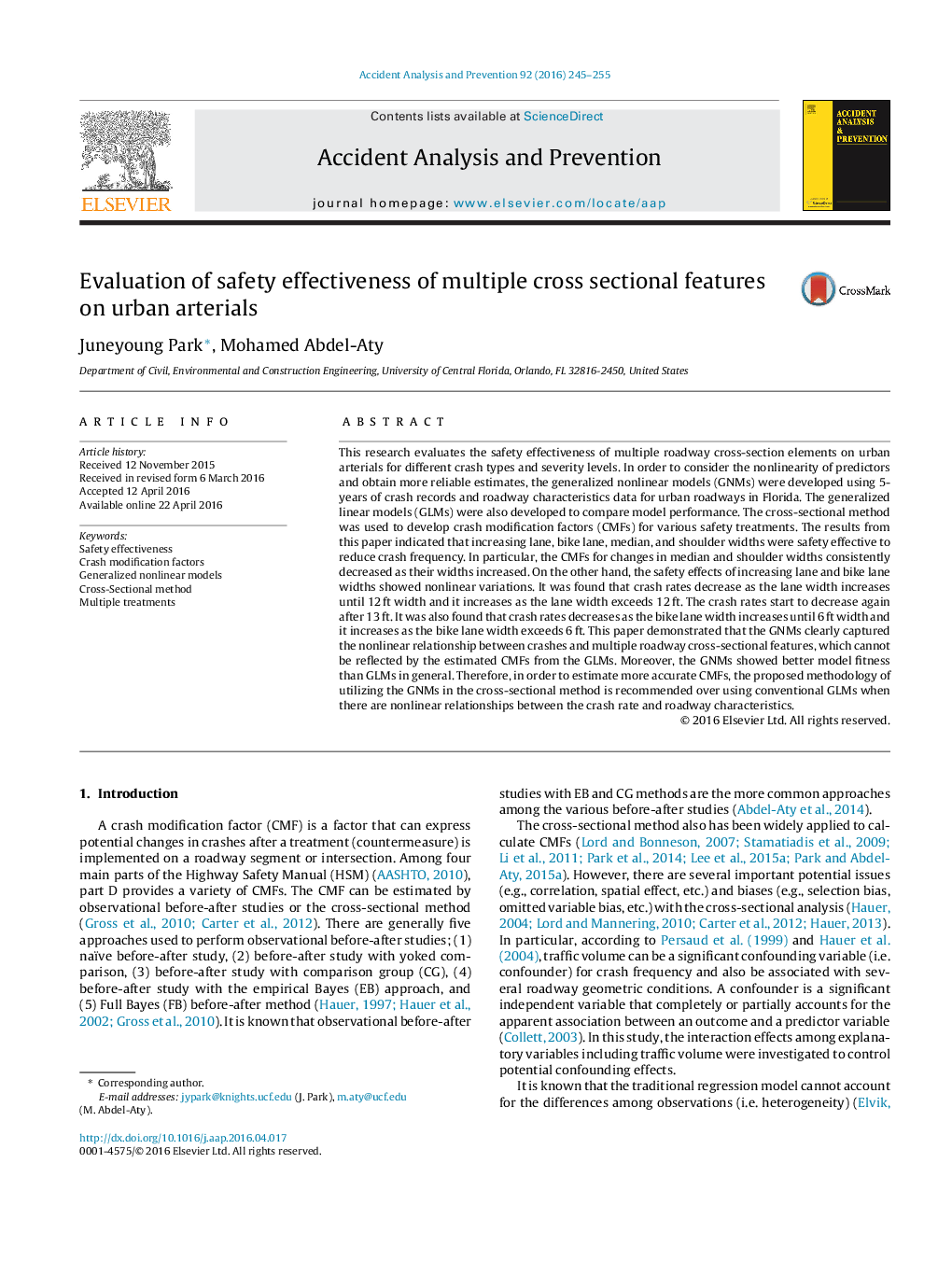| Article ID | Journal | Published Year | Pages | File Type |
|---|---|---|---|---|
| 572056 | Accident Analysis & Prevention | 2016 | 11 Pages |
•The results indicate that increasing lane, bike lane, median, and shoulder widths were safety effective to reduce crash frequency.•The CMFs for changes in median and shoulder widths consistently decreased as their widths increased.•On the other hand, the safety effects of increasing lane and bike lane widths showed nonlinear variations.•The GNMs show better model fitness than GLMs due to its strength to reflect nonlinear relationships between crashes and multiple roadway cross-sectional features.
This research evaluates the safety effectiveness of multiple roadway cross-section elements on urban arterials for different crash types and severity levels. In order to consider the nonlinearity of predictors and obtain more reliable estimates, the generalized nonlinear models (GNMs) were developed using 5-years of crash records and roadway characteristics data for urban roadways in Florida. The generalized linear models (GLMs) were also developed to compare model performance. The cross-sectional method was used to develop crash modification factors (CMFs) for various safety treatments. The results from this paper indicated that increasing lane, bike lane, median, and shoulder widths were safety effective to reduce crash frequency. In particular, the CMFs for changes in median and shoulder widths consistently decreased as their widths increased. On the other hand, the safety effects of increasing lane and bike lane widths showed nonlinear variations. It was found that crash rates decrease as the lane width increases until 12 ft width and it increases as the lane width exceeds 12 ft. The crash rates start to decrease again after 13 ft. It was also found that crash rates decreases as the bike lane width increases until 6 ft width and it increases as the bike lane width exceeds 6 ft. This paper demonstrated that the GNMs clearly captured the nonlinear relationship between crashes and multiple roadway cross-sectional features, which cannot be reflected by the estimated CMFs from the GLMs. Moreover, the GNMs showed better model fitness than GLMs in general. Therefore, in order to estimate more accurate CMFs, the proposed methodology of utilizing the GNMs in the cross-sectional method is recommended over using conventional GLMs when there are nonlinear relationships between the crash rate and roadway characteristics.
